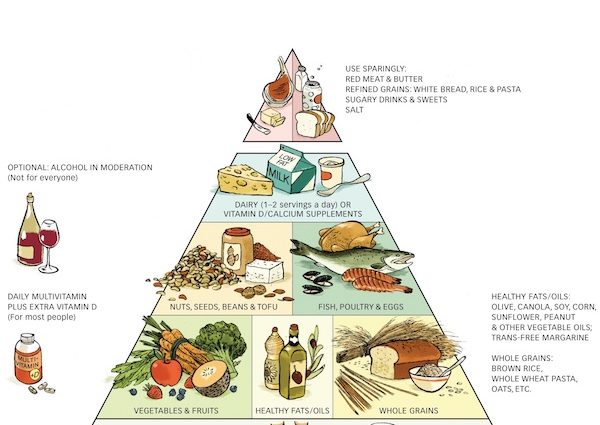Contents
Do not forget to eat right before training: it is thanks to food that the body receives the necessary energy and prepares for the upcoming loads.
Lose weight, gain weight, stay in shape. All these goals consist of two global components: sports and proper nutrition. We have sifted through a lot of materials to put together for you a simple and understandable guide to nutrition during exercise.
In this article we will tell you about the features of the body’s energy consumption, why proteins, carbohydrates and fats are needed. And we say right away – there is no ready-made menu here, there are products. Dietary supplements and medicines will not be advertised here – everything is natural and without doping.
Let’s start with the basics – calories.
Meet Wilbur Atwater in the photo.
American scientist. 1844-1907
It was he who provided evidence that the law of conservation of energy can be fully applied to the human body. In the 19th century, it was believed that this law applies only to the exact sciences. Thanks to Wilbur Atwater, the energy value of food is now written on the packages, and proteins, fats and carbohydrates are considered to be the main components of energy for the body.
Interesting fact. It turns out that there are two concepts – energy value and nutritional value. The first shows only the number of calories. The second is calorie content, the amount of proteins, fats, carbohydrates and vitamins.
According to the law of conservation of energy, at rest the body also spends resources to maintain life activities. For example, you are currently reading this article, clearly at rest. Your body at the same time spends calories on heartbeat, temperature, blood flow, metabolism, organ function and much more.
What is the daily calorie intake?
The amount of energy that is needed to maintain the body in its current state is called the daily calorie intake. An example from life. The person wants to lose weight. Sharp. Reduces the diet in the hope of getting rid of excess fat. How does the body perceive it – stress, you have to survive. Metabolism is disturbed, the brain gives constant signals to nutrition, then breakdowns occur. Regardless of willpower. Efforts are in vain.
Even if a person reaches weight loss with this regimen, then muscles and water will be lost. But not fat.
How to calculate the daily calorie intake for men and women?
There are a good couple of dozen formulas for calculations. Each of them is sharpened for certain cases of the state of the body and external conditions. The most common method is the Mifflin-Joer formula. According to experts, the formula shows the most correct results for people without pathological diseases.
It is necessary to correct these formulas every month. If you ran for the first 4 weeks in the morning for 15 minutes, and for the second month you decided to add cycles of strength training. Then the calorie intake will be different.
- Doing for weight loss – we consider the norm of calories, reduce it by 15% and build a diet according to this value.
- Working on mass gain – on the contrary, we increase the rate by 15% and build a diet from this value.
- Working to keep in shape – when we adhere to the daily calorie intake.
Various tricks, life hacks, diet and muscle growth kits exploit these principles. Only you and I already know about the law of conservation of energy. If everything was really so easy, we would open libraries, not fitness clubs. The whole point is in the diet, namely in the distribution of proteins, fats and carbohydrates. Let’s just talk about them.
Proteins, fats and carbohydrates
We have already understood above that proteins, fats and carbohydrates are the basis of energy. Let’s analyze without scientific terms who is responsible for what.
- Proteins form and restore body tissues (including muscle tissues).
- Carbohydrates are the main source of energy.
- Fats protect the body from heat loss and protect internal organs.
Previously, we detailed what causes improper management of carbohydrates in the diet. Therefore, depending on the goals of the training, the distribution of BJU in nutrition is also built.
What foods are good for pre-workout nutrition?
We list only useful products:
- PROTEINS – Cottage cheese, meat, eggs, fish and seafood.
- FATS – Olives, olives, walnuts, wheat germ, avocados, sesame seeds, peanuts.
- CARBOHYDRATES – Bread, durum pasta, vegetables, cereals, fruits, milk.
Rules of nutrition and diet during physical activity
- If we are losing weight: 50% proteins, 30% fats, 20% carbohydrates.
- If we are gaining mass: 30% proteins, 40% fats, 30% carbohydrates.
- If we support form: 30% proteins, 45% fats, 25% carbohydrates.
The calculation is based on the daily calorie intake. According to such proportions, the diet is built during physical exertion. Since we play sports and want to eat right, let’s also learn the rules of nutrition before training.
- Meals before training 2 hours before the start, so that the body has time to digest everything. Lack of food intake can even cause fainting.
- If the training is aerobic – more carbohydrates, if the strength training – more proteins.
- Eating after a workout – after 2 hours, so that the body processes its own fat into energy.
- After a workout, a desirable food that is rich in proteins.
- Throughout the session and after it, drink as much water as possible to maintain balance in the body.
The path to getting a beautiful body begins at the kitchen table. Analyze everything that you eat in a week. Calculate the daily calorie intake, formulate a goal and select a training program.
The most important thing is that there are no quick results in working on yourself. Be patient.










